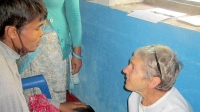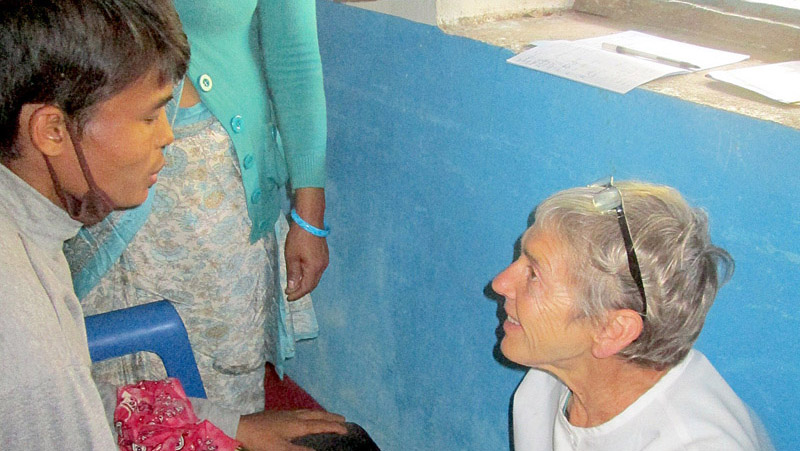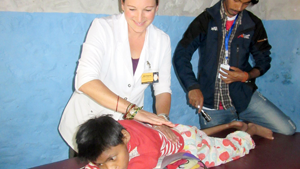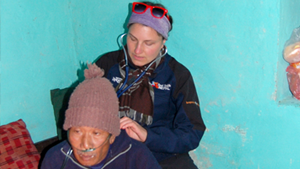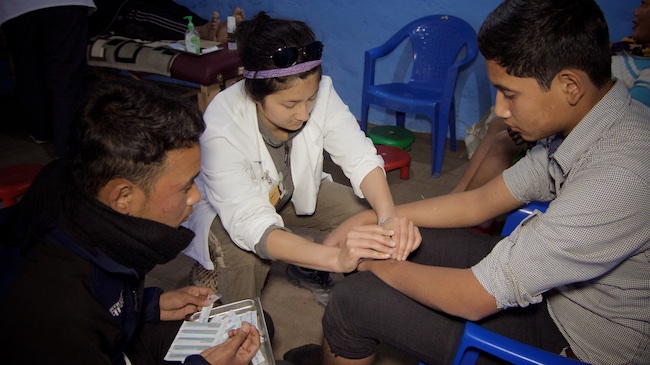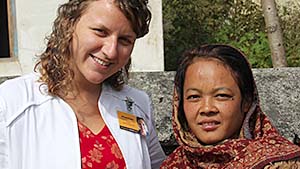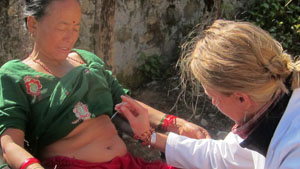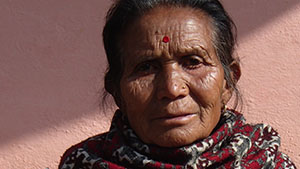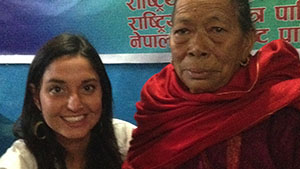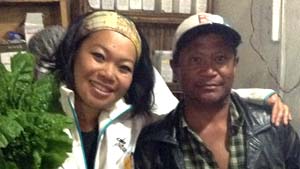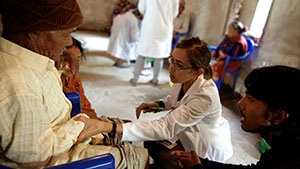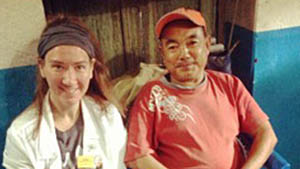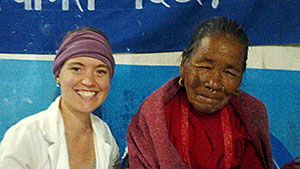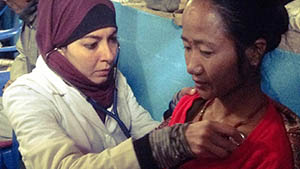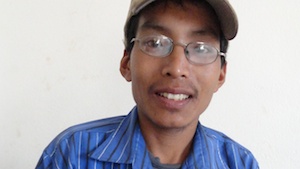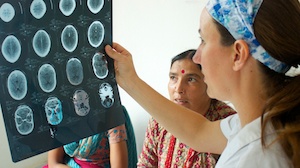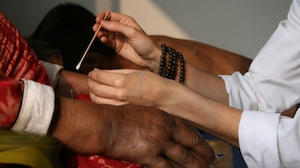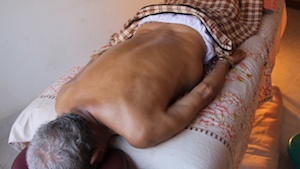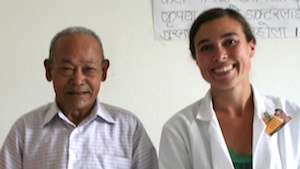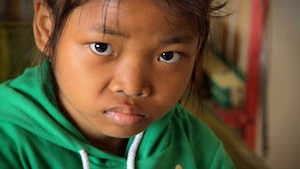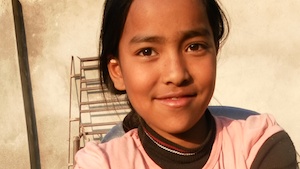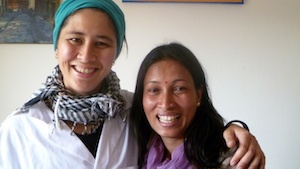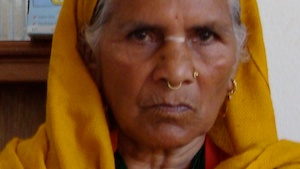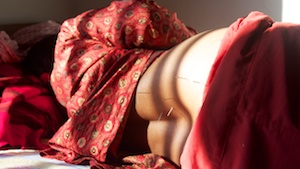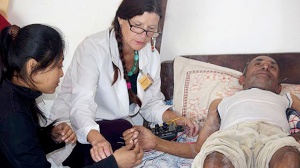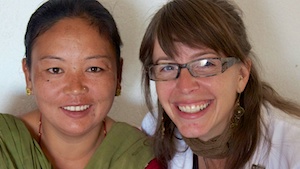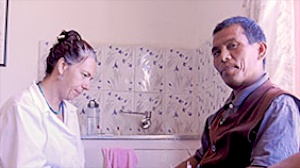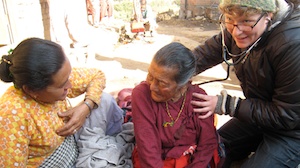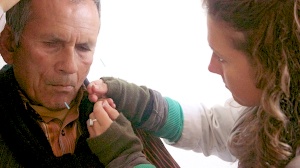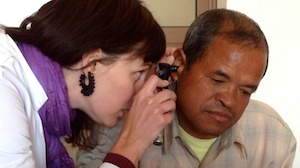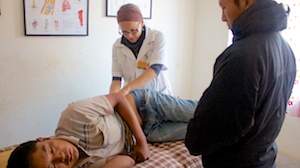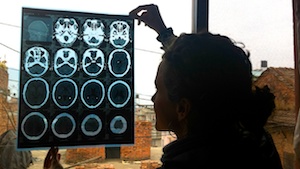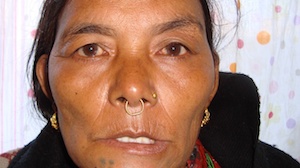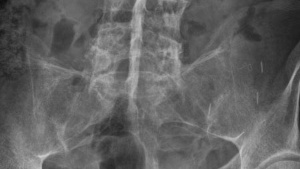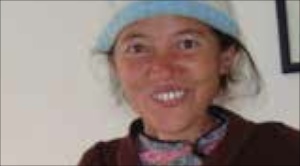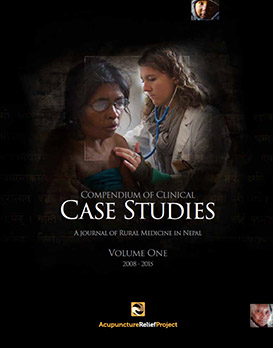Andrew Schlabach MAcOM EAMP
December 2008
OVERVIEW
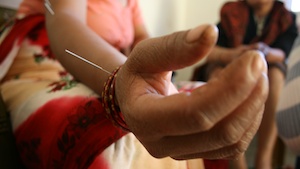 32-year-old female presents with left-sided paralysis of upper and lower limbs. At age 12, the patient suffered from a fever due to Typhoid that caused convulsions and coma. After a 20-year history of paralysis, this patient recovered most of her upper limb function and some lower limb function with acupuncture treatment.
32-year-old female presents with left-sided paralysis of upper and lower limbs. At age 12, the patient suffered from a fever due to Typhoid that caused convulsions and coma. After a 20-year history of paralysis, this patient recovered most of her upper limb function and some lower limb function with acupuncture treatment.
SUBJECTIVE
Patient presents with left-sided paralysis of the upper and lower limbs. She has no pain in the effected limbs, but reports numbness and tingling in the fingers and toes of the effected side. This condition started at age 12 after suffering a high fever, due to Typhoid, which caused convulsions and a 5-day coma. She was treated at the local hospital for Typhoid, but has received no treatment for the paralysis. Patient also reports right-sided knee pain, likely due to poor structural alignment and asymmetrical walking posture. Patient reports persistent low energy, sadness and is easily moved to tears. Patient has 3 children and works as a farmer. Menstruation is regular at about 30 days with scanty flow of pale color for 2-3 days. No menstrual pain or PMS symptoms.
OBJECTIVE
Patient appears to be in good health for age and environment, but has a slow affect and appears somewhat mentally diminished. Her demeanor is of a person in her early teens.
The left arm is held closely to the chest and the fingers of the left hand are tightly contracted. The fingers can be passively extended with little force, but they return to a contracted condition immediately upon release. The patient can move the shoulder normally, but cannot actively flex or extend the elbow. The hand lacks active response. All joints can be passively moved through all ROM without pain or difficulties. Sharp/dull test on the fingertips shows no objective numbness. DTR on bicep and tricep tendons is normal. DTR on brachioradialis is unresponsive.
The left leg is normal in size and coloration. The left foot is inverted at rest and requires some force to passively evert. Hip flexion and extension have normal ROM and are well coordinated. Muscle strength is similar to the well side. Leg flexion and extension has normal AROM but are poorly coordinated, taking about 15 seconds of concentrated effort to complete the motion. Muscle strength is about 20% of the well side. Patient does not have any active control of the left foot. DTR on patellar tendon and hamstring is sluggish and weak. DTR on the calcaneal tendon is unresponsive. Sharp/dull test of the toes shows no objective numbness.
Pulses are deep and weak and tongue is pale and deeply scalloped.
ASSESSMENT
DX: Motor paralysis of several major muscle groups in the upper and lower limbs likely due to febrile damage to the central nervous system
TCM DX: Wei syndrome due to qi and blood deficiency; Obstruction of the channels and meridians
PROGNOSIS: Due to the fact that this condition has been left untreated for 20 years, it is unlikely to expect significant response.
INITIAL PLAN
Treat with acupuncture 3 times per week for 10 treatments before reassessing. Focus on the Yang Ming to stimulate qi and blood. Make heavy use of electro-acupuncture crossing multiple joints, especially concentrating on anterior and lateral compartments of the leg and flexor/extensor complexes of the forearm. Internally, use Dang Gui San 4g TID to tonify and move blood.
Typical treatment: Left: ST36 electro to LR3, GB34 electo to GB41, LI10 electro to LI4, HT3 (distal) electro to HT8, Ba Xie (with heavy stimulation), Ba Feng (with heavy stimulation); Right: ST36, SP6, KI7, HT7, DU 20, 24
Alternative treatment: Pi Ci needling of hand and foot Yang Ming channels, scalp motor sensory (leg, foot and arm zones x3) on well side with electro-stimulation
OUTCOME
After 10 treatments, the patient reported no change in condition. The patient was informed that due to the long-term nature of the condition and the lack of response to treatment, it was unlikely that acupuncture treatment would be beneficial. The patient opted to continue treatment, but after 18 treatments she still reported “no change.” At this time, the patient was encouraged to discontinue treatment. The patient immediately broke into tears stating that she wanted to continue treatment because when she started, she was unable to carry the water bucket. Now, she could. Before she started treatment, she could not walk to the clinic. Now, she could. This was a major revelation of change in condition, which brought to our attention the concept that culturally, “no change” often means “I’m not cured.” After a more thorough objective examination, it was observed that the patient now had weak, uncoordinated active movement of the fingers. She could also actively evert the foot. After this discovery, the patient was treated every other day for 4 weeks, during which time she made rapid improvement. Eventually, she was given exercises to teach both the well and ill hands how to isolate individual finger movements. She was instructed to use her eyes to observe her well hand through a series of individual digital movements before trying to replicate the movements with her ill hand. Progress was slow, but continual. The patient was continuously encouraged to exercise. In every treatment session, the patient was reminded of how far she had progressed. After 48 treatments over 3 months, the patient had full, active dexterity of the left hand even though the left arm remained 10-20% weaker than the right. The left foot did not respond as well and remained 50% weaker than the right. Dexterity of the toes was not recovered. However, the patient could dorsiflex and plantar flex the foot.
CONCLUSION
This patient was nearly released from care due to poor communication, objective observation and subjective reporting. When dealing with paralysis recovery, careful objective observation and measures are imperative as the patient is not always aware of the slow changes that are taking place. Visual exercises, in addition to the acupuncture treatment, significantly accelerated the recovery process. Paralysis patients need constant encouragement as the course of treatment is slow. Often, the condition seems to plateau before new changes take place.


